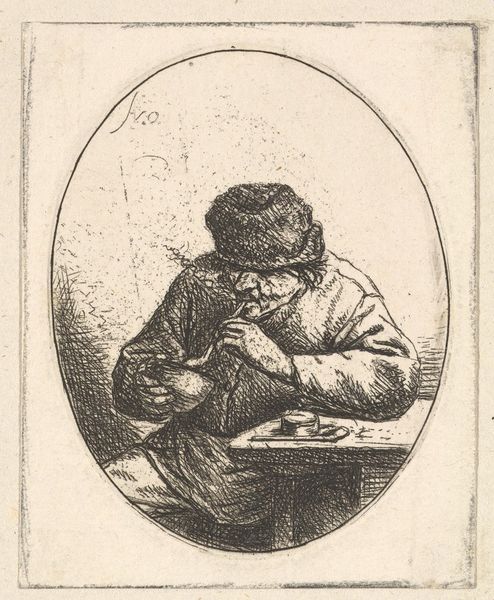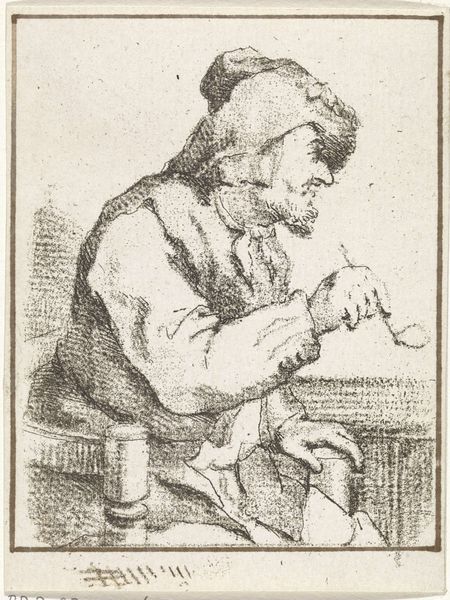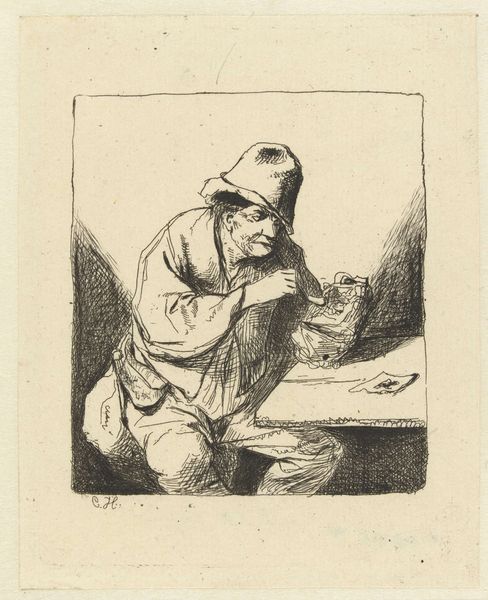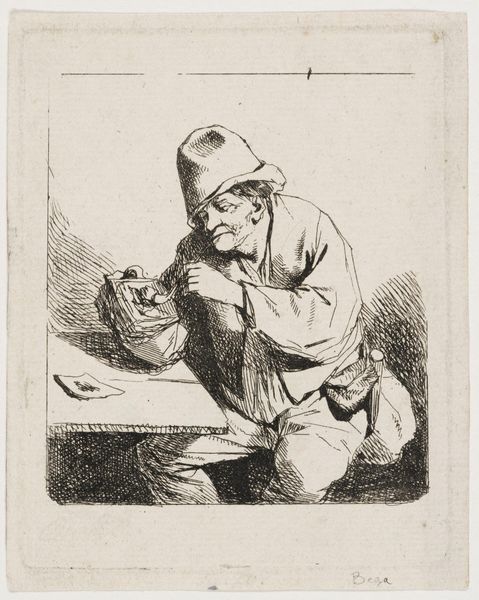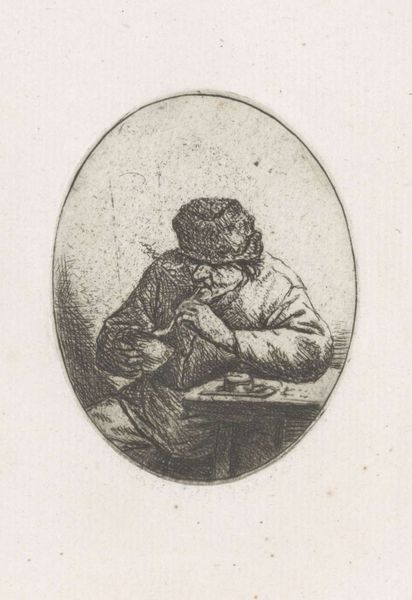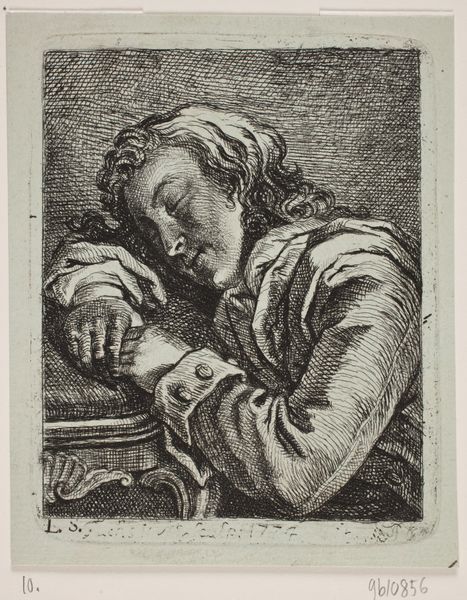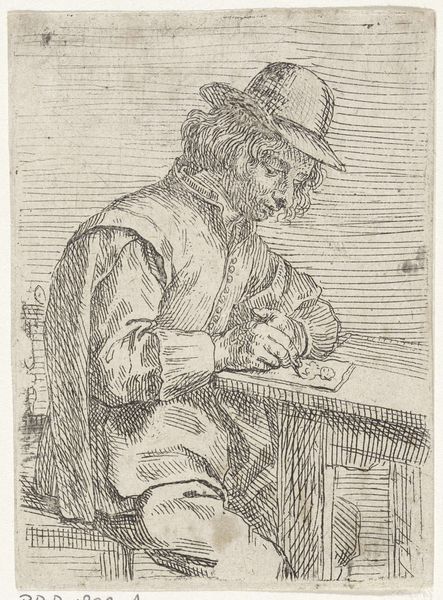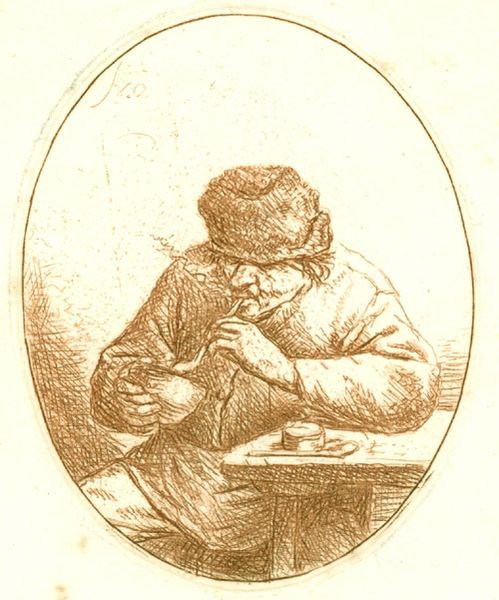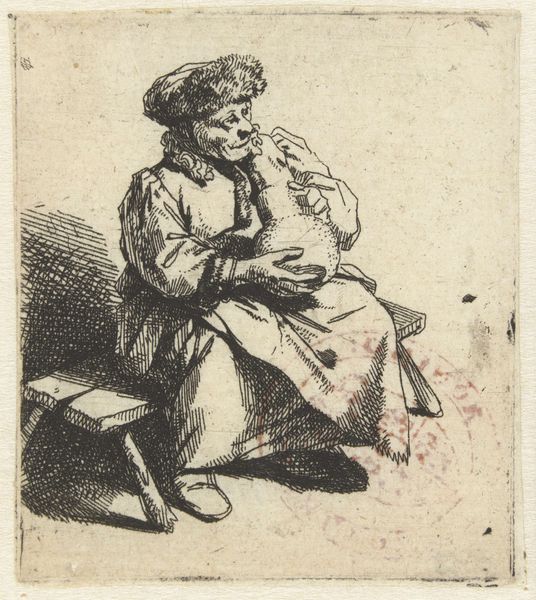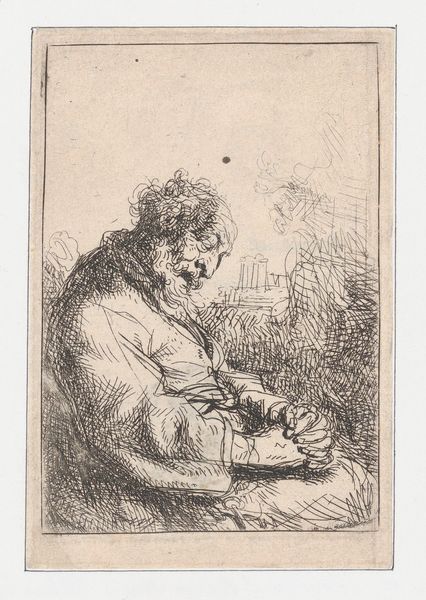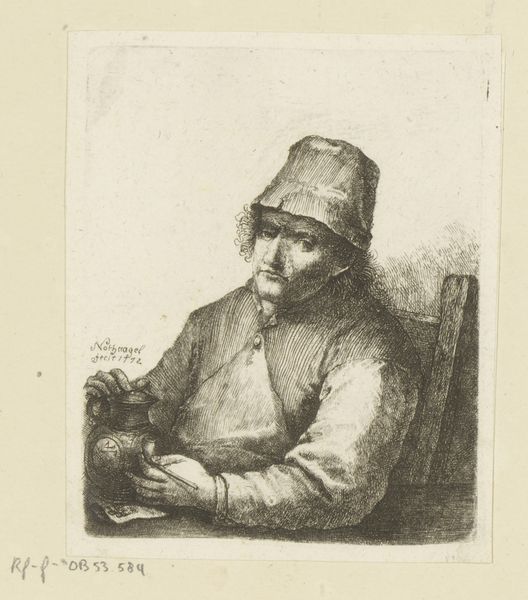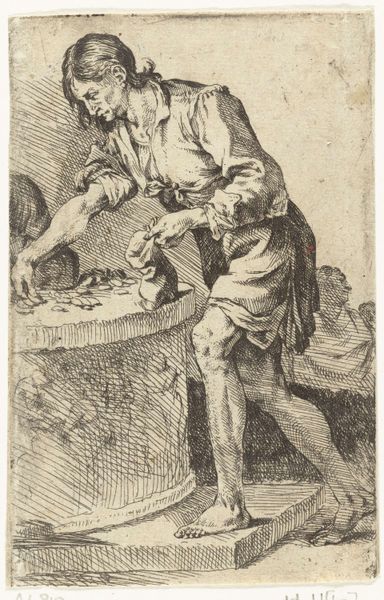
print, etching
#
portrait
#
baroque
# print
#
etching
#
genre-painting
Dimensions: height 68 mm, width 54 mm
Copyright: Rijks Museum: Open Domain
Curator: Before us, we have "Man Lighting His Pipe," an etching made by Adriaen van Ostade, dating from before 1647. It’s currently held in the Rijksmuseum. Editor: The somber quality of the line work definitely conveys a quiet, almost introspective mood. The oval format feels classic but constricting somehow. Curator: Van Ostade's work provides valuable insights into the social life of the Dutch Golden Age. Consider the prevalence of tobacco use in 17th-century Dutch society, not only among the wealthy but also within the working class. Images like this are primary resources for cultural understanding. Editor: Observe how the artist has used hatching to describe form and volume. The density of lines suggests shadow and depth. I also note the subject is truncated; it cuts him off, making him immediate to us as a viewer, yet also concealing a part of him from us. Curator: And think about that concealment. Van Ostade perhaps critiques a form of labor and rest that is implicitly gendered. Whose labor affords this moment of leisure? Does the artist elevate or critique it? Editor: You raise an excellent point about the interplay between work, leisure, and class. However, from a formal perspective, the way he creates an intimacy is very compelling. His mark making builds into larger forms which communicate an immediacy. Curator: Absolutely. This etching exemplifies the period's genre painting—scenes from everyday life—but through an interesting intersectional lens that requires understanding through sociology and history. The genre celebrates and possibly ignores those outside this scene. Editor: A very careful balance between darkness and light through line and texture creates both the subject and its emotional atmosphere, though, I must concede that this work pushes against a romantic sensibility through those omissions you've suggested. Curator: In short, van Ostade captures a man engaged in a simple act, made complex by his time, a snapshot that's preserved, offering rich narratives for centuries to come. Editor: Ultimately, this piece shows the enduring power of form, light, and shadow when understood in conjunction with history. The conversation they can start is endless.
Comments
No comments
Be the first to comment and join the conversation on the ultimate creative platform.
